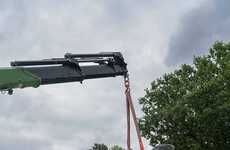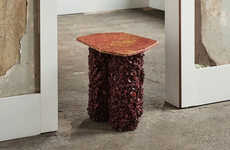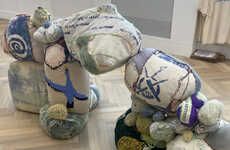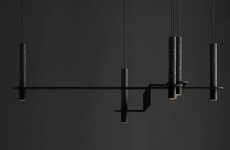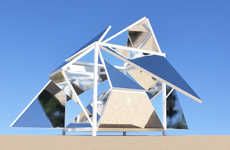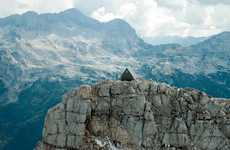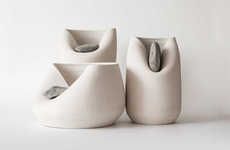
This Public Art Piece by Daniel De Paula Showcase His Rock Collection
Christopher Magsambol — November 8, 2015 — Art & Design
Many people choose to collect stamps or stickers, but Brazilian artist Daniel de Paula would rather collect rock samples. De Paula has gathered an enormous series of rocks through a series of geotechnical surveys he has done in Sao Paolo.
In his exhibition 'testemunho,' which means testimony, the artist placed his rock collection in a very strategic manner. The rock samples are arranged in chronological order according to their geological age. The drilled, cylindrical shapes are used to determine subsoil properties in civil engineering and consist of built-up sediment.
This site-specific piece is explained by the gallery as "a contrast of geological formation of the earth's crust and the time it took to construct the world's biggest cities." In using rock samples as his main medium, artist Daniel de Paulais explores the dialogue between art, architecture and the city in an interesting way.
In his exhibition 'testemunho,' which means testimony, the artist placed his rock collection in a very strategic manner. The rock samples are arranged in chronological order according to their geological age. The drilled, cylindrical shapes are used to determine subsoil properties in civil engineering and consist of built-up sediment.
This site-specific piece is explained by the gallery as "a contrast of geological formation of the earth's crust and the time it took to construct the world's biggest cities." In using rock samples as his main medium, artist Daniel de Paulais explores the dialogue between art, architecture and the city in an interesting way.
Trend Themes
1. Geotechnical Surveys - The use of geotechnical surveys in art installations presents a disruptive innovation opportunity to merge science and creativity.
2. Chronological Arrangements - The arrangement of objects in chronological order offers a disruptive innovation opportunity to create unique storytelling experiences across various industries.
3. Site-specific Art - The development of site-specific art installations opens up disruptive innovation opportunities for artists to engage with the environment and create immersive experiences.
Industry Implications
1. Civil Engineering - The integration of rock samples from geotechnical surveys into civil engineering processes presents a disruptive innovation opportunity to enhance project planning and construction.
2. Fine Arts - The incorporation of geological elements in art installations offers disruptive innovation opportunities for fine artists to explore new materials and concepts.
3. Urban Planning - The use of rock samples to showcase the geological history of cities provides disruptive innovation opportunities for urban planners to incorporate geological narratives into urban design.
1.9
Score
Popularity
Activity
Freshness



